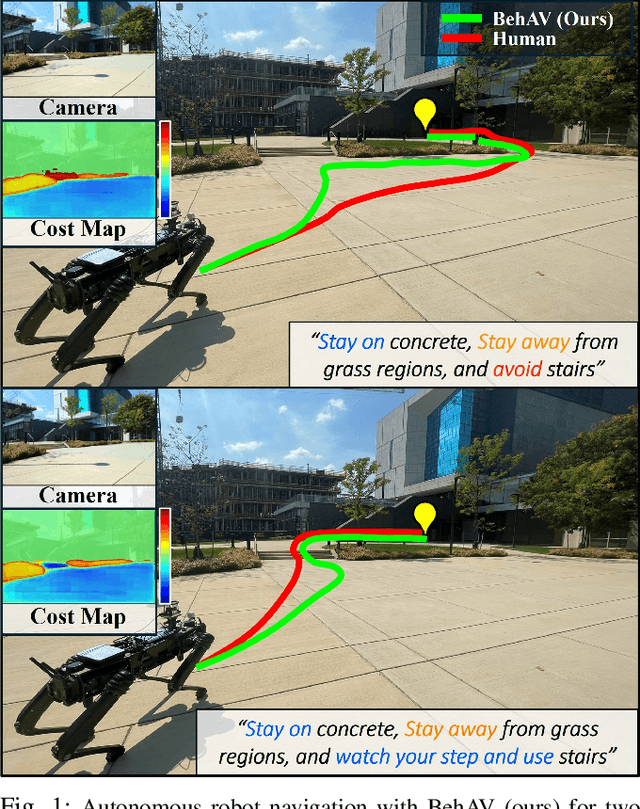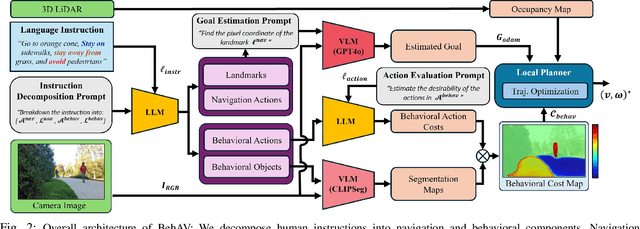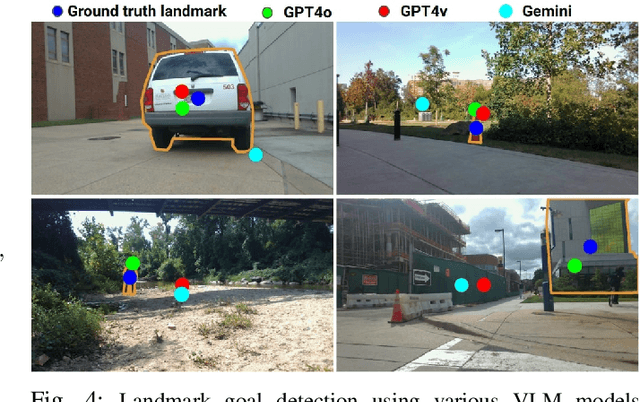Jing Liang
Squeeze the Soaked Sponge: Efficient Off-policy Reinforcement Finetuning for Large Language Model
Jul 09, 2025Abstract:Reinforcement Learning (RL) has demonstrated its potential to improve the reasoning ability of Large Language Models (LLMs). One major limitation of most existing Reinforcement Finetuning (RFT) methods is that they are on-policy RL in nature, i.e., data generated during the past learning process is not fully utilized. This inevitably comes at a significant cost of compute and time, posing a stringent bottleneck on continuing economic and efficient scaling. To this end, we launch the renaissance of off-policy RL and propose Reincarnating Mix-policy Proximal Policy Gradient (ReMix), a general approach to enable on-policy RFT methods like PPO and GRPO to leverage off-policy data. ReMix consists of three major components: (1) Mix-policy proximal policy gradient with an increased Update-To-Data (UTD) ratio for efficient training; (2) KL-Convex policy constraint to balance the trade-off between stability and flexibility; (3) Policy reincarnation to achieve a seamless transition from efficient early-stage learning to steady asymptotic improvement. In our experiments, we train a series of ReMix models upon PPO, GRPO and 1.5B, 7B base models. ReMix shows an average Pass@1 accuracy of 52.10% (for 1.5B model) with 0.079M response rollouts, 350 training steps and achieves 63.27%/64.39% (for 7B model) with 0.007M/0.011M response rollouts, 50/75 training steps, on five math reasoning benchmarks (i.e., AIME'24, AMC'23, Minerva, OlympiadBench, and MATH500). Compared with 15 recent advanced models, ReMix shows SOTA-level performance with an over 30x to 450x reduction in training cost in terms of rollout data volume. In addition, we reveal insightful findings via multifaceted analysis, including the implicit preference for shorter responses due to the Whipping Effect of off-policy discrepancy, the collapse mode of self-reflection behavior under the presence of severe off-policyness, etc.
LLM Agents for Education: Advances and Applications
Mar 14, 2025Abstract:Large Language Model (LLM) agents have demonstrated remarkable capabilities in automating tasks and driving innovation across diverse educational applications. In this survey, we provide a systematic review of state-of-the-art research on LLM agents in education, categorizing them into two broad classes: (1) \emph{Pedagogical Agents}, which focus on automating complex pedagogical tasks to support both teachers and students; and (2) \emph{Domain-Specific Educational Agents}, which are tailored for specialized fields such as science education, language learning, and professional development. We comprehensively examine the technological advancements underlying these LLM agents, including key datasets, benchmarks, and algorithmic frameworks that drive their effectiveness. Furthermore, we discuss critical challenges such as privacy, bias and fairness concerns, hallucination mitigation, and integration with existing educational ecosystems. This survey aims to provide a comprehensive technological overview of LLM agents for education, fostering further research and collaboration to enhance their impact for the greater good of learners and educators alike.
Vi-LAD: Vision-Language Attention Distillation for Socially-Aware Robot Navigation in Dynamic Environments
Mar 12, 2025Abstract:We introduce Vision-Language Attention Distillation (Vi-LAD), a novel approach for distilling socially compliant navigation knowledge from a large Vision-Language Model (VLM) into a lightweight transformer model for real-time robotic navigation. Unlike traditional methods that rely on expert demonstrations or human-annotated datasets, Vi-LAD performs knowledge distillation and fine-tuning at the intermediate layer representation level (i.e., attention maps) by leveraging the backbone of a pre-trained vision-action model. These attention maps highlight key navigational regions in a given scene, which serve as implicit guidance for socially aware motion planning. Vi-LAD fine-tunes a transformer-based model using intermediate attention maps extracted from the pre-trained vision-action model, combined with attention-like semantic maps constructed from a large VLM. To achieve this, we introduce a novel attention-level distillation loss that fuses knowledge from both sources, generating augmented attention maps with enhanced social awareness. These refined attention maps are then utilized as a traversability costmap within a socially aware model predictive controller (MPC) for navigation. We validate our approach through real-world experiments on a Husky wheeled robot, demonstrating significant improvements over state-of-the-art (SOTA) navigation methods. Our results show up to 14.2% - 50% improvement in success rate, which highlights the effectiveness of Vi-LAD in enabling socially compliant and efficient robot navigation.
AutoSpatial: Visual-Language Reasoning for Social Robot Navigation through Efficient Spatial Reasoning Learning
Mar 10, 2025Abstract:We present a novel method, AutoSpatial, an efficient approach with structured spatial grounding to enhance VLMs' spatial reasoning. By combining minimal manual supervision with large-scale Visual Question-Answering (VQA) pairs auto-labeling, our approach tackles the challenge of VLMs' limited spatial understanding in social navigation tasks. By applying a hierarchical two-round VQA strategy during training, AutoSpatial achieves both global and detailed understanding of scenarios, demonstrating more accurate spatial perception, movement prediction, Chain of Thought (CoT) reasoning, final action, and explanation compared to other SOTA approaches. These five components are essential for comprehensive social navigation reasoning. Our approach was evaluated using both expert systems (GPT-4o, Gemini 2.0 Flash, and Claude 3.5 Sonnet) that provided cross-validation scores and human evaluators who assigned relative rankings to compare model performances across four key aspects. Augmented by the enhanced spatial reasoning capabilities, AutoSpatial demonstrates substantial improvements by averaged cross-validation score from expert systems in: perception & prediction (up to 10.71%), reasoning (up to 16.26%), action (up to 20.50%), and explanation (up to 18.73%) compared to baseline models trained only on manually annotated data.
ET-Former: Efficient Triplane Deformable Attention for 3D Semantic Scene Completion From Monocular Camera
Oct 14, 2024



Abstract:We introduce ET-Former, a novel end-to-end algorithm for semantic scene completion using a single monocular camera. Our approach generates a semantic occupancy map from single RGB observation while simultaneously providing uncertainty estimates for semantic predictions. By designing a triplane-based deformable attention mechanism, our approach improves geometric understanding of the scene than other SOTA approaches and reduces noise in semantic predictions. Additionally, through the use of a Conditional Variational AutoEncoder (CVAE), we estimate the uncertainties of these predictions. The generated semantic and uncertainty maps will aid in the formulation of navigation strategies that facilitate safe and permissible decision-making in the future. Evaluated on the Semantic-KITTI dataset, ET-Former achieves the highest IoU and mIoU, surpassing other methods by 15.16% in IoU and 24.24% in mIoU, while reducing GPU memory usage of existing methods by 25%-50.5%.
BehAV: Behavioral Rule Guided Autonomy Using VLMs for Robot Navigation in Outdoor Scenes
Sep 24, 2024



Abstract:We present BehAV, a novel approach for autonomous robot navigation in outdoor scenes guided by human instructions and leveraging Vision Language Models (VLMs). Our method interprets human commands using a Large Language Model (LLM) and categorizes the instructions into navigation and behavioral guidelines. Navigation guidelines consist of directional commands (e.g., "move forward until") and associated landmarks (e.g., "the building with blue windows"), while behavioral guidelines encompass regulatory actions (e.g., "stay on") and their corresponding objects (e.g., "pavements"). We use VLMs for their zero-shot scene understanding capabilities to estimate landmark locations from RGB images for robot navigation. Further, we introduce a novel scene representation that utilizes VLMs to ground behavioral rules into a behavioral cost map. This cost map encodes the presence of behavioral objects within the scene and assigns costs based on their regulatory actions. The behavioral cost map is integrated with a LiDAR-based occupancy map for navigation. To navigate outdoor scenes while adhering to the instructed behaviors, we present an unconstrained Model Predictive Control (MPC)-based planner that prioritizes both reaching landmarks and following behavioral guidelines. We evaluate the performance of BehAV on a quadruped robot across diverse real-world scenarios, demonstrating a 22.49% improvement in alignment with human-teleoperated actions, as measured by Frechet distance, and achieving a 40% higher navigation success rate compared to state-of-the-art methods.
GND: Global Navigation Dataset with Multi-Modal Perception and Multi-Category Traversability in Outdoor Campus Environments
Sep 21, 2024



Abstract:Navigating large-scale outdoor environments requires complex reasoning in terms of geometric structures, environmental semantics, and terrain characteristics, which are typically captured by onboard sensors such as LiDAR and cameras. While current mobile robots can navigate such environments using pre-defined, high-precision maps based on hand-crafted rules catered for the specific environment, they lack commonsense reasoning capabilities that most humans possess when navigating unknown outdoor spaces. To address this gap, we introduce the Global Navigation Dataset (GND), a large-scale dataset that integrates multi-modal sensory data, including 3D LiDAR point clouds and RGB and 360-degree images, as well as multi-category traversability maps (pedestrian walkways, vehicle roadways, stairs, off-road terrain, and obstacles) from ten university campuses. These environments encompass a variety of parks, urban settings, elevation changes, and campus layouts of different scales. The dataset covers approximately 2.7km2 and includes at least 350 buildings in total. We also present a set of novel applications of GND to showcase its utility to enable global robot navigation, such as map-based global navigation, mapless navigation, and global place recognition.
TGS: Trajectory Generation and Selection using Vision Language Models in Mapless Outdoor Environments
Aug 07, 2024



Abstract:We present a multi-modal trajectory generation and selection algorithm for real-world mapless outdoor navigation in challenging scenarios with unstructured off-road features like buildings, grass, and curbs. Our goal is to compute suitable trajectories that (1) satisfy the environment-specific traversability constraints and (2) generate human-like paths while navigating in crosswalks, sidewalks, etc. Our formulation uses a Conditional Variational Autoencoder (CVAE) generative model enhanced with traversability constraints to generate multiple candidate trajectories for global navigation. We use VLMs and a visual prompting approach with their zero-shot ability of semantic understanding and logical reasoning to choose the best trajectory given the contextual information about the task. We evaluate our methods in various outdoor scenes with wheeled robots and compare the performance with other global navigation algorithms. In practice, we observe at least 3.35% improvement in traversability and 20.61% improvement in terms of human-like navigation in generated trajectories in challenging outdoor navigation scenarios.
CSCPR: Cross-Source-Context Indoor RGB-D Place Recognition
Jul 24, 2024



Abstract:We present a new algorithm, Cross-Source-Context Place Recognition (CSCPR), for RGB-D indoor place recognition that integrates global retrieval and reranking into a single end-to-end model. Unlike prior approaches that primarily focus on the RGB domain, CSCPR is designed to handle the RGB-D data. We extend the Context-of-Clusters (CoCs) for handling noisy colorized point clouds and introduce two novel modules for reranking: the Self-Context Cluster (SCC) and Cross Source Context Cluster (CSCC), which enhance feature representation and match query-database pairs based on local features, respectively. We also present two new datasets, ScanNetIPR and ARKitIPR. Our experiments demonstrate that CSCPR significantly outperforms state-of-the-art models on these datasets by at least 36.5% in Recall@1 at ScanNet-PR dataset and 44% in new datasets. Code and datasets will be released.
A Two-stage Evolutionary Framework For Multi-objective Optimization
Jul 09, 2024Abstract:In the field of evolutionary multi-objective optimization, the approximation of the Pareto front (PF) is achieved by utilizing a collection of representative candidate solutions that exhibit desirable convergence and diversity. Although several multi-objective evolutionary algorithms (MOEAs) have been designed, they still have difficulties in keeping balance between convergence and diversity of population. To better solve multi-objective optimization problems (MOPs), this paper proposes a Two-stage Evolutionary Framework For Multi-objective Optimization (TEMOF). Literally, algorithms are divided into two stages to enhance the search capability of the population. During the initial half of evolutions, parental selection is exclusively conducted from the primary population. Additionally, we not only perform environmental selection on the current population, but we also establish an external archive to store individuals situated on the first PF. Subsequently, in the second stage, parents are randomly chosen either from the population or the archive. In the experiments, one classic MOEA and two state-of-the-art MOEAs are integrated into the framework to form three new algorithms. The experimental results demonstrate the superior and robust performance of the proposed framework across a wide range of MOPs. Besides, the winner among three new algorithms is compared with several existing MOEAs and shows better results. Meanwhile, we conclude the reasons that why the two-stage framework is effect for the existing benchmark functions.
 Add to Chrome
Add to Chrome Add to Firefox
Add to Firefox Add to Edge
Add to Edge